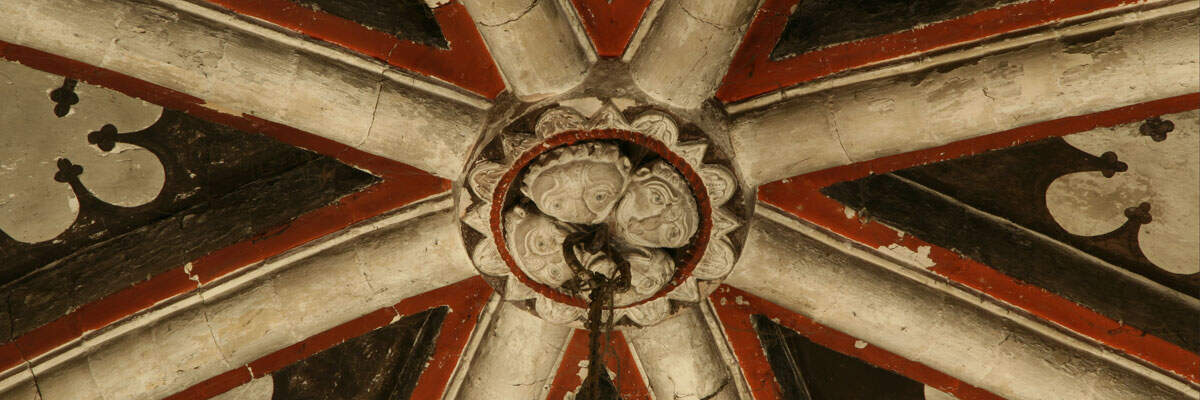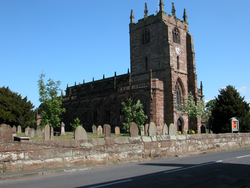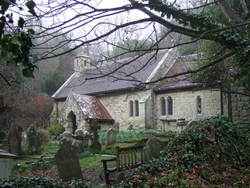
The Corpus of ROMANESQUE SCULPTURE in Britain & Ireland

St Boniface (now)
Parish church
The church that stands today is on the plan of the collegiate church projected by Sir Hugh Calvely in 1385-86 and begun after 1388. Of this only the lower parts of the S nave wall, the W tower, the N treasury and the chancel with its arch survive. The parish retained the nave, and they replaced it c.1500 with the present light and airy six-bay construction with its large aisle windows and the aisles extending alongside the tower. In 1527 the Ridley Chapel was added to the S of the chancel, the chancel wall being pierced by a two-bay arcade while the E window of the S nave aisle was retained (as at Acton). The present clerestorey dates from 1865, and replaces one of c.1500. None of the fabric of the Romanesque church survives in place, but carved stones have been discovered beneath the floor from time to time, and all are now stored in the S porch, along with the assortment of ironwork and flower-arranging equipment essential to the operation of a modern church. This store is something of an Aladdin's cave, containing as it does a substantial collection of later medieval carved tomb-slabs, moulded stones, and the 12thc. stones described below. There may well be more.
Parish church, former
St Boniface Old Church is situated in The Undercliff area of the island, a short distance inland from the S coast. The church consists of a nave, chancel and a S porch leading to a Romanesque doorway. The chancel has N and S lancet windows. The chancel arch was formerly a simple round headed arch. The neo-Norman appearance of the chancel arch is due to restoration work carried out in the early 20thc by Percy Stone (Lloyd and Pevsner 2006, 86-7).

